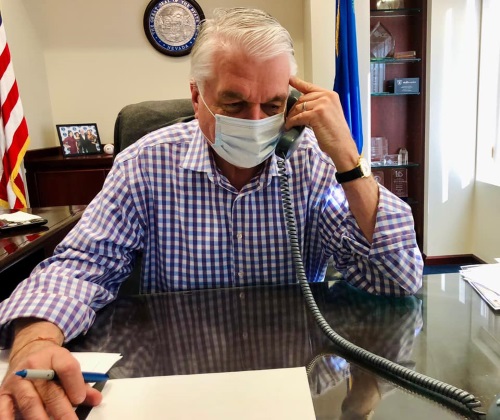The new State Climate Strategy released by the Nevada Climate Initiative on December 1 outlines how the state plans to meet “aggressive” greenhouse gas or GHG emission reduction targets over the next three decades in three stages – 28 percent cut by 2025, 45 percent by 2030, and net-zero/near-zero by 2050.
[Photo courtesy of the Nevada Department of Transportation.]
That strategic report results from a sweeping Executive Order on Climate Change issued by Governor Steve Sisolak (D) in November 2019 that called for the evaluation, identification, and recommendation of the “most effective” climate policies and regulatory initiatives for Nevada.
“It’s a new era for climate action in Nevada,” the governor noted in a statement. “Nevada’s State Climate Strategy serves as the critical framework necessary to elevate climate action and foster a healthy, vibrant, climate-resilient future. As we continue our recovery from the COVID-19 pandemic climate action must play a key role in rebuilding a stronger, more climate-friendly, and equitable economy for Nevada.”

The report noted that Nevada’s GHG emissions inventory mirrors trends occurring across the western United States, where transportation-sector emissions (35 percent) now exceed those from the energy sector (32 percent) – historically the largest source of GHG emissions. Industrial, residential, and commercial emissions are growing rapidly, while those associated with other sectors remain relatively consistent, it said.
Under current policies and based on the best available science, Nevada is currently on a path to reduce economy-wide GHG emissions 24 percent by 2025 and 26 percent by 2030 – 4 percent and 19 percent short of the respective emissions-reduction goals for those years.
The report noted that by meeting Nevada’s emission reduction targets, Nevada would prevent between $172 million and $786 million in economic damages by 2030 and up to $4 billion by 2050.
Consequently, the report said the state needs “new mitigation-focused policies, programs, investments, and regulations” to put Nevada on the path toward realizing net-zero GHG emissions by 2050 – with much of it geared towards the transportation sector.
The report recommends five transportation strategies for reducing GHG emissions going forward:
- Adopting low- and zero-emissions vehicle standards
- Implementing a clean truck program
- Adopting low-carbon fuel standards
- Implementing state car allowance rebate system or “cash for clunkers” program
- Closing emissions inspection loopholes for classic car license plates
“As the transportation sector recently surpassed energy generation as the largest contributor of emissions in our state, we have been working hard to encourage alternative modes of transportation and carpooling to decrease the number of vehicles on our roads,” explained Kristina Swallow, director, Nevada Department of Transportation.
“Through the Nevada Electric Highway, HOV [High Occupancy Vehicle] lanes, Clean Cities, and other initiatives, we will continue to work collaboratively with our local, state, and federal partners on creative, data-driven strategies to reduce emissions across our vast transportation network,” she added.

